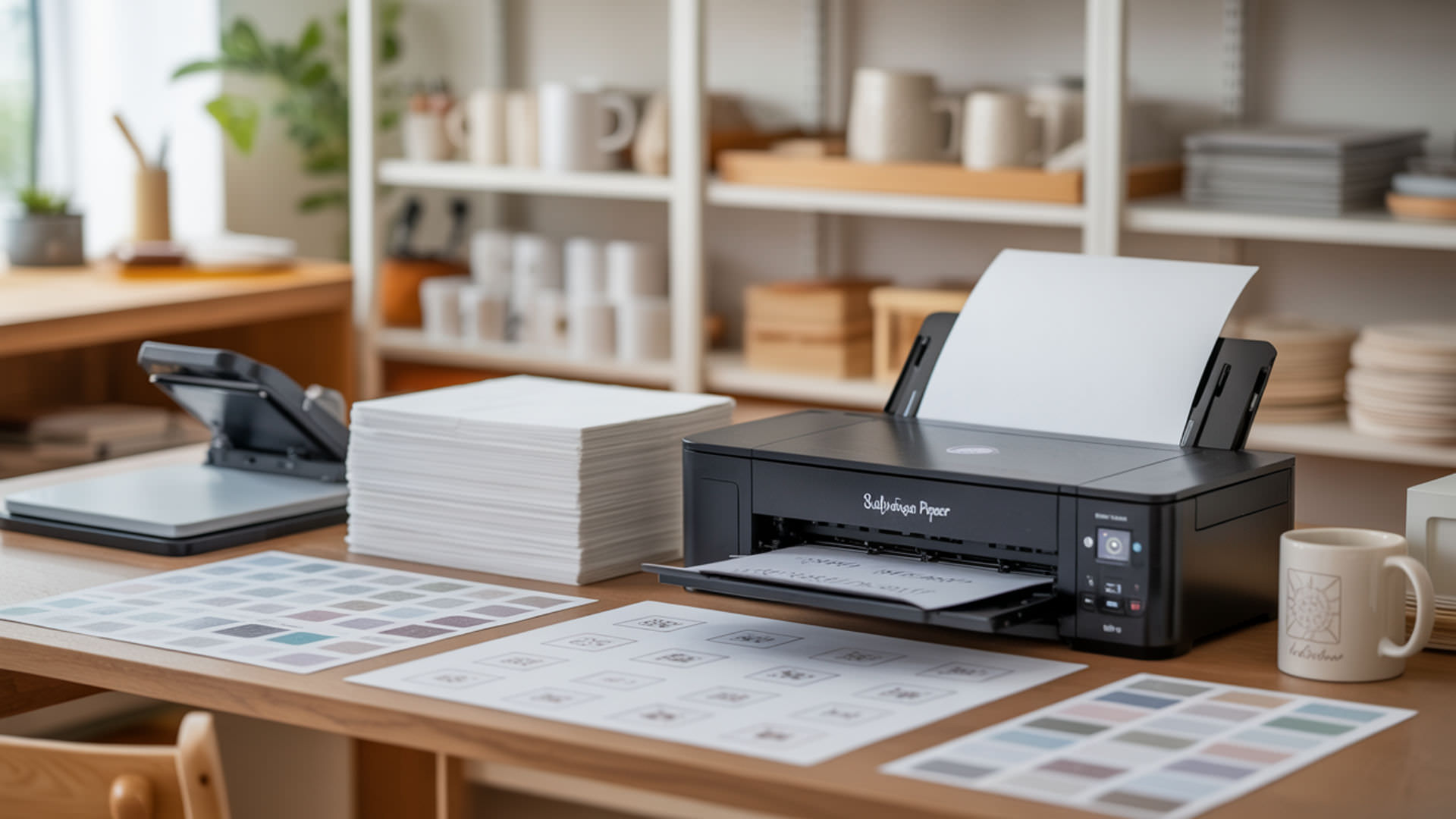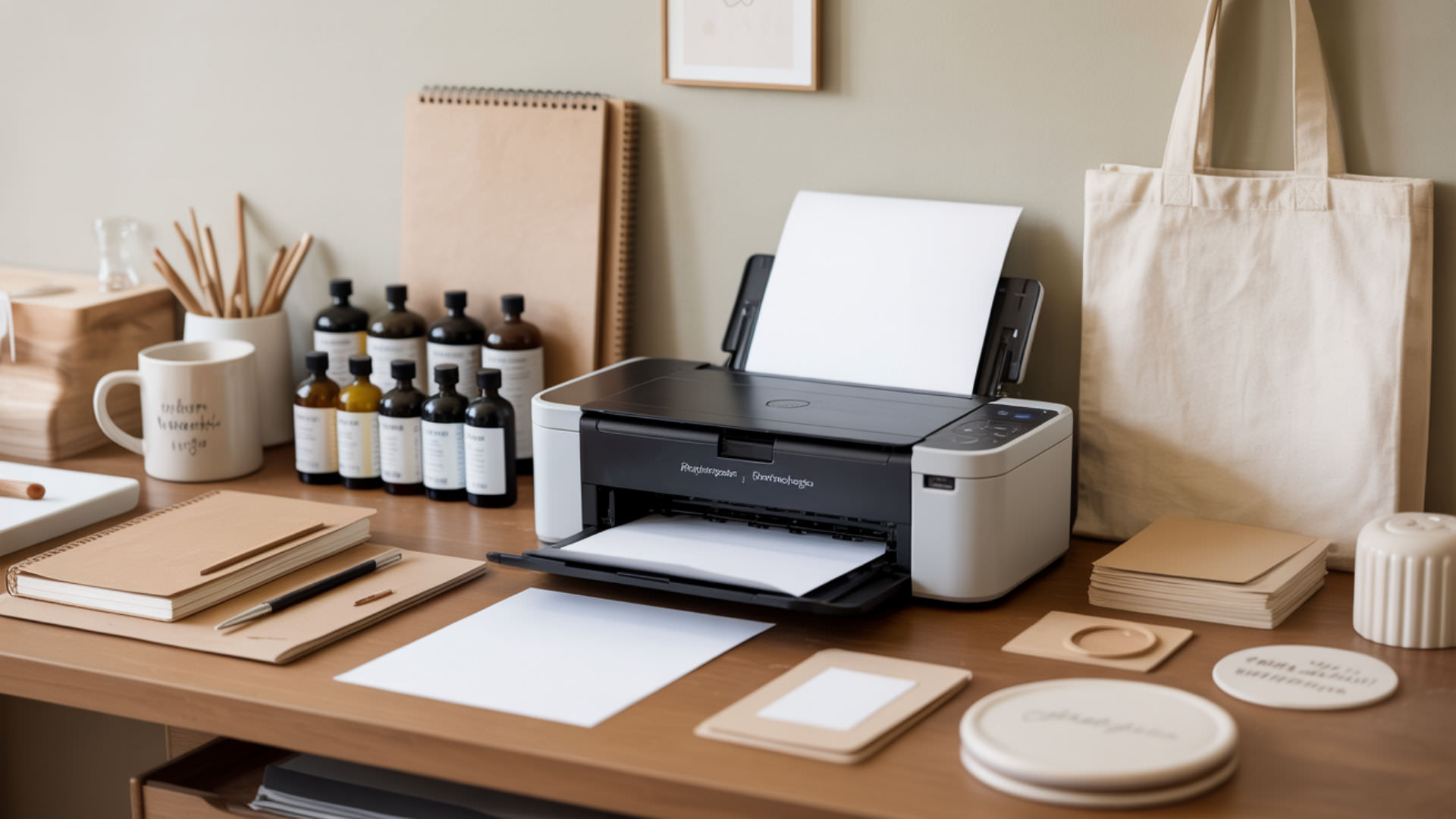Table of Contents
ToggleUnclogging a sublimation printer requires clearing dried dye-sublimation ink from the print head nozzles using cleaning cycles, manual flushing, or solvent soaking. Idle time beyond 1–2 weeks allows ink to dry and form blockages because dye-sublimation ink evaporates faster than pigment-based formulas when exposed to air. Because the print head is where all blockages form, understanding basic printer operation from our guide on how to use a sublimation printer provides essential context for effective troubleshooting.
Key Takeaways
- Nozzles are easily blocked by dried disperse dye or airborne debris that accumulates during idle periods.
- Nozzle cleaning through built-in printer cycles is the first-line method for resolving mild to moderate clogs.
- Banding—horizontal lines across prints—serves as an early visual indicator of partial nozzle blockage.
How do you unclog a sublimation printer?
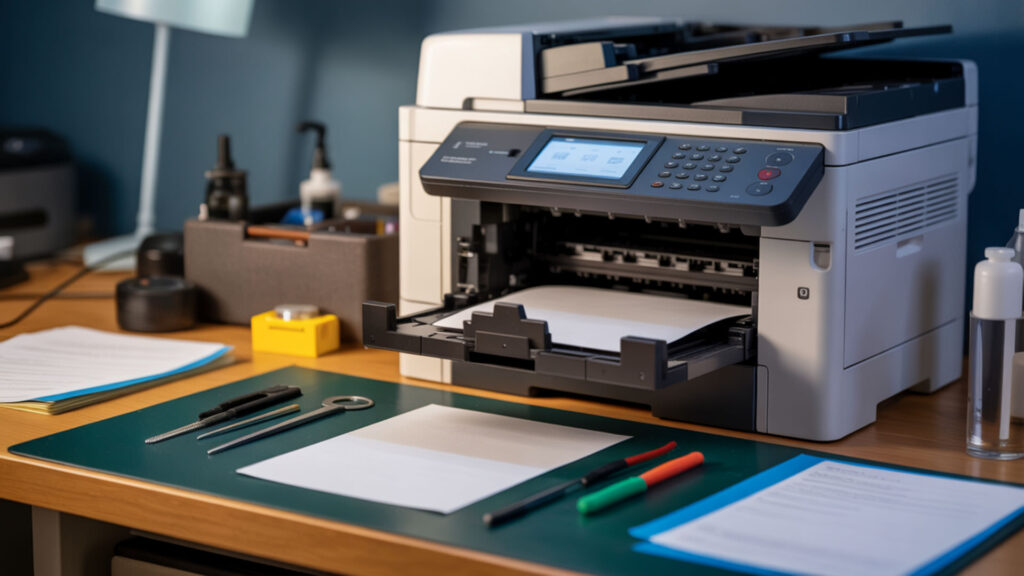
Nozzle cleaning clears mild clogs using built-in printer cycles that push ink through blocked channels under controlled pressure. An ink purge forces ink more aggressively to break harder deposits that standard cleaning cannot dissolve. Disperse dye solidifies when stagnant, forming dense blockages that require progressively stronger intervention—from automated cycles to manual flushing. For detailed nozzle cleaning techniques including soaking and syringe methods, see our complete guide on how to clean sublimation printer heads.
How do you unclog a printer safely?
Cleaning agent selection determines whether unclogging succeeds without damaging delicate print head components—use only solutions formulated for piezo printheads. The pump mechanism provides controlled suction during cleaning cycles, pulling dissolved ink residue away from nozzles without introducing harmful pressure. Avoid aggressive manual scraping and never use tap water, which deposits minerals that create secondary blockages. Tap water contains dissolved minerals that remain behind after evaporation, which can create additional deposits and worsen clogs inside precision printhead channels. [1]
What are the most common signs of clogs in sublimation printers?
Missing nozzles appear as gaps or incomplete segments in nozzle check patterns, showing which channels have stopped firing. Banding presents as horizontal lines across prints where partially blocked nozzles deliver inconsistent ink volume. Color shift occurs when one CMYK channel clogs while others print normally, causing images to display incorrect hues or missing color ranges entirely.
What cleaning solutions work best for printhead clogs?

Specialized cleaning agents designed for piezo printheads dissolve dried dye safely using formulations of distilled water (85–95%), isopropyl alcohol (1–10%), and surfactants. Isopropyl alcohol helps dissolve stubborn ink residue but requires dilution to 50% or less to prevent seal and gasket damage. Purified water avoids mineral deposits that tap water leaves inside precision nozzle channels, making it essential for any cleaning solution mixture.
Can you soak a sublimation printhead to remove clogs?
Deionized water is safe for extended soaking sessions of 10–30 minutes without introducing mineral contamination that worsens blockages. Dye aggregation—where dried particles clump together inside nozzles—requires prolonged soaking to dissolve hardened deposits that quick cleaning cannot penetrate. Submerge only the nozzle plate in 3–5mm of cleaning solution, keeping electrical contacts and upper components completely dry.
Can you manually unclog a printhead without tools damaging it?
Nozzles are easily damaged by scraping, excessive pressure, or abrasive materials—the microscopic openings measure just 20–50 microns in diameter. Solvent-based cleaning dissolves ink chemically without physical contact, making it far safer than mechanical intervention. Apply cleaning solution using lint-free swabs or blunt syringes with gentle pressure, never inserting objects directly into nozzle openings.
How do you unclog printer nozzles effectively?
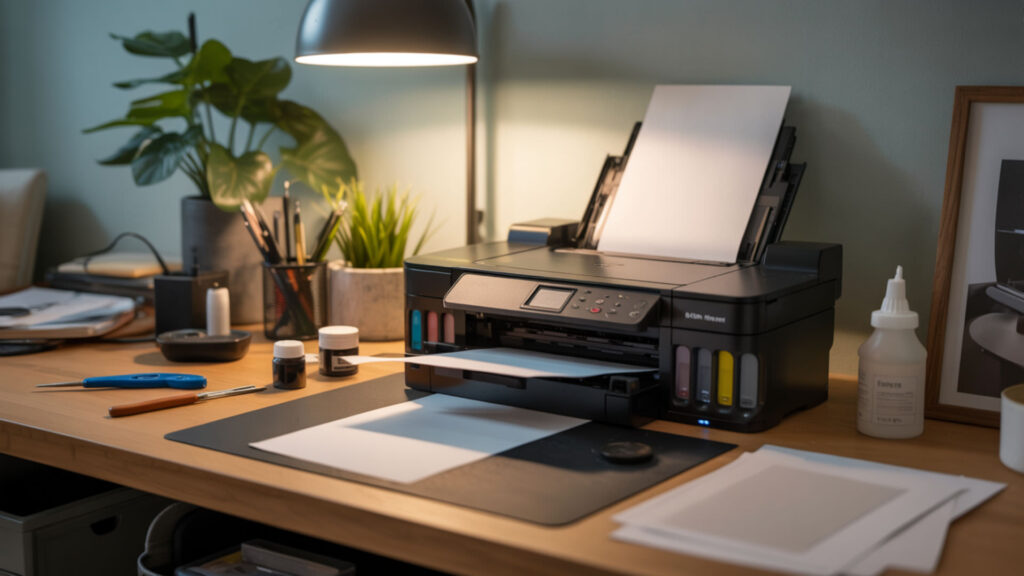
Deep cleaning cycles clear more stubborn blockages by applying extended suction and increased ink flow compared to standard maintenance routines. Nozzles clog when drying causes ink evaporation at the nozzle plate, leaving behind hardened dye crystals that accumulate with each idle period. Run 2–4 cleaning cycles with 5–10 minute rest intervals, checking nozzle patterns after each attempt to track progress before escalating to manual methods.
What happens when dye-based ink clogs inside a printhead?
Dye-sublimation ink forms sticky residues as water content evaporates, leaving concentrated dye particles adhered to nozzle walls. Disperse dye solidifies and bonds chemically inside nozzles over time, creating deposits that grow harder to remove with each passing day. Drying speed depends on ambient humidity and idle duration—low humidity below 40% and idle periods beyond 1 week dramatically accelerate crystallization.When liquids dry through evaporation, dissolved solids remain behind and harden over time, which is the same mechanism that causes ink residue to block fine nozzle channels. [2]
How do you unclog a sublimation printer step-by-step?
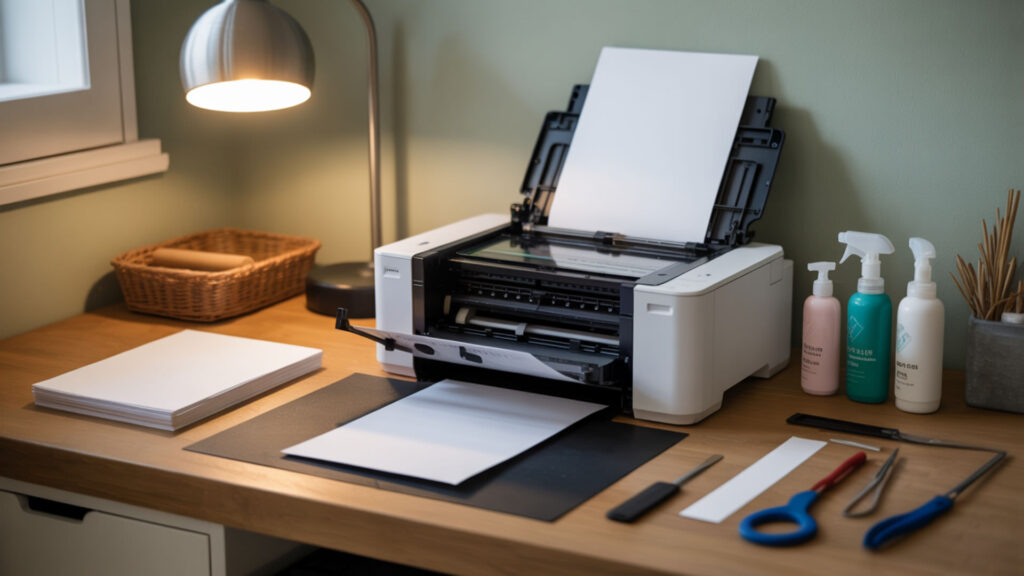
Start with an ink purge cycle through the printer software to push semi-dry ink out of partially blocked channels—this resolves 60–70% of minor clogs. Clean the wiper blade with deionized water to remove dried ink that could recontaminate the printhead during subsequent cleaning cycles. Run a nozzle check pattern after each cleaning attempt to identify which channels remain blocked. Professional maintenance kits include syringes, cleaning fluids, and wiper blade cleaning tools for complete step-by-step unclogging—see our best sublimation printer maintenance kit guide for recommendations.
Can you unclog ink cartridges with a toothpick?

Ink cartridge outlets can accumulate dried ink at the exit point where ink transfers to the print head assembly. Nozzles are extremely delicate—microscopic openings that toothpicks, pins, or other pointed objects can permanently scratch or deform. Physical probing often pushes debris deeper into channels rather than clearing blockages, creating worse obstructions than the original clog.
Can you use a toothpick to unclog a cartridge without damage?
Solvent-based cleaning provides a safer alternative to scraping—chemical dissolution removes dried ink without physical contact that risks scratching precision surfaces. Dust and debris from wooden toothpicks introduce new contaminants that compound existing clogs rather than resolving them. If cartridge outlets appear blocked, soak the outlet area in warm cleaning solution for 10–15 minutes before attempting any intervention.
How do you unclog a cartridge safely if the toothpick method is attempted?
Purified water can rinse dried ink softly from cartridge outlets when applied with a dampened lint-free cloth rather than pointed objects. Cleaning agent solutions dissolve residues without abrasion—soak the cartridge outlet in solution for 5–10 minutes, then blot gently on paper towels until color transfers cleanly. Never force objects into cartridge openings; instead, rely on capillary action and solvent chemistry to clear blockages.
How can you prevent future printhead clogs?
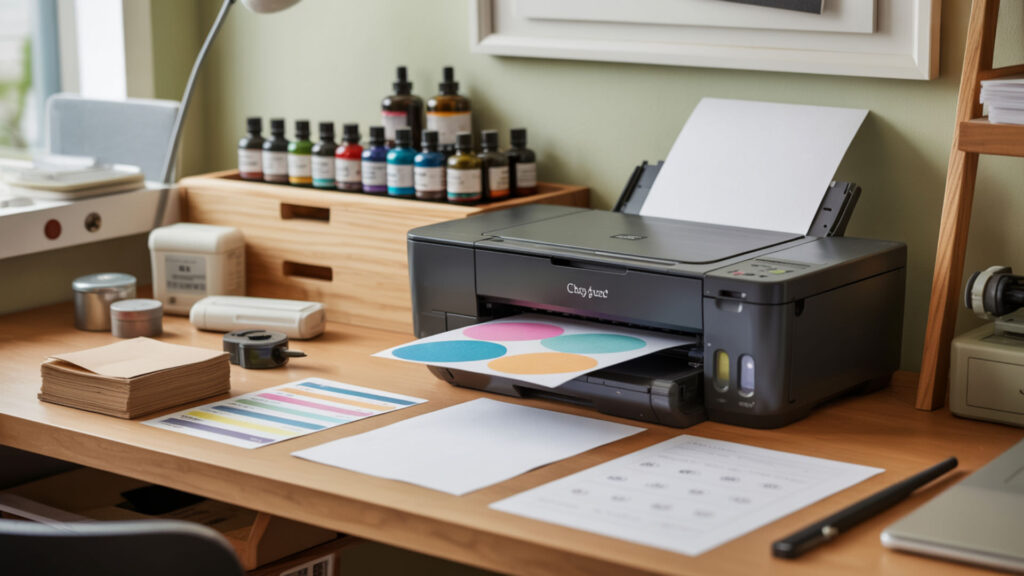
Idle time creates dry ink and recurring blockages—printing a small test pattern weekly keeps all channels flowing and prevents dye settlement. Humidity directly affects drying rate, with levels between 40–60% providing optimal conditions that slow ink evaporation at the nozzle surface. Maintenance cycles keep ink flowing and heads wet through automatic routines that activate when the printer remains powered on. For comprehensive preventive routines including environmental control and maintenance cycles, see our detailed guide on how to maintain sublimation printers.
Why is my sublimation print losing color or printing unevenly?
Ink starvation causes missing or weak colors when partial clogs restrict ink flow to specific CMYK channels, reducing droplet volume below visible thresholds. Temperature dependence affects ink viscosity—cold environments thicken sublimation ink, making it struggle to flow evenly through already-narrowed nozzle openings. Check nozzle patterns to identify which colors are affected, then target cleaning efforts at those specific channels.
What causes repeated line streaks even after cleaning?
Banding that persists after cleaning indicates lingering partial blockages that standard cycles cannot fully clear, requiring manual intervention or extended soaking. A weak pump mechanism reduces suction pressure, limiting the printer’s ability to pull dissolved ink through stubborn clogs during automated cleaning. A dirty capping station fails to seal the print head properly during rest periods, allowing rapid re-drying that recreates blockages within hours.
Ready to Fix Your Clogged Sublimation Printer?
Successful print head unclogging requires patience, proper cleaning solutions, and progressive escalation from automated cycles to manual methods when necessary. Nozzle cleaning should become a regular maintenance habit rather than an emergency response—weekly test prints and proper humidity control prevent most clogs before they form. Your sublimation printer will deliver consistent, vibrant output when blockages are addressed promptly and prevention becomes routine.
Frequently Asked Questions
Can printer heads be cleaned more than once safely?
Nozzles can safely undergo repeated cleaning within limits—run 2–4 consecutive cycles with 5–10 minute rest intervals before pausing for 6–12 hours. Excessive cleaning accelerates waste ink pad saturation and pump mechanism wear. If clogs persist after 4 cycles, switch to manual cleaning methods rather than continuing automated attempts that consume ink without resolving the blockage.
How long can clogs sit before ink becomes too dry to remove?
Disperse dye begins hardening within 3–7 days of idle time in normal humidity conditions (40–50%). After 2–3 weeks, blockages become significantly harder to dissolve and may require extended soaking or syringe flushing. Clogs older than 4–6 weeks often cause permanent nozzle damage that cleaning cannot reverse, potentially requiring print head replacement.
Can cartridge nozzles clog even if the printer prints regularly?
Drying can occur even during regular printing if humidity drops below 35% or if certain color channels receive less use than others. Black-heavy documents may keep K channel clear while CMY channels develop partial blockages from lower ink flow. Print full-color test patterns weekly to ensure all channels receive equal activity and prevent selective drying.
Does sublimation ink behave differently than standard ink when clogged?
Dye-sublimation ink dries faster than pigment or standard dye inks because its water-based carrier evaporates readily at room temperature. Disperse dye particles bond more aggressively to nozzle walls as they dry, creating harder deposits than typical inkjet formulations. This behavior makes prevention more critical for sublimation printers—clogs develop faster and become stubborn sooner than in conventional inkjet systems.
What are the long-term effects of improper printhead cleaning?
Aggressive cleaning with incompatible solvents, excessive pressure, or abrasive tools can permanently damage nozzle coatings and piezo elements. Scratched nozzles produce misfired droplets that create visible artifacts in prints even after blockages are cleared. Over-cleaning also accelerates waste system wear—pumps, pads, and capping stations all degrade faster when subjected to unnecessary cleaning cycles.
References
- (n.d.). Welcome to the Illinois State Water Survey. https://www.isws.illinois.edu/pubdoc/C/ISWSC-90.pdf
- Drying/Hydration in cement pastes during curing. (2017, February 19). NIST. https://www.nist.gov/publications/dryinghydration-cement-pastes-during-curing



